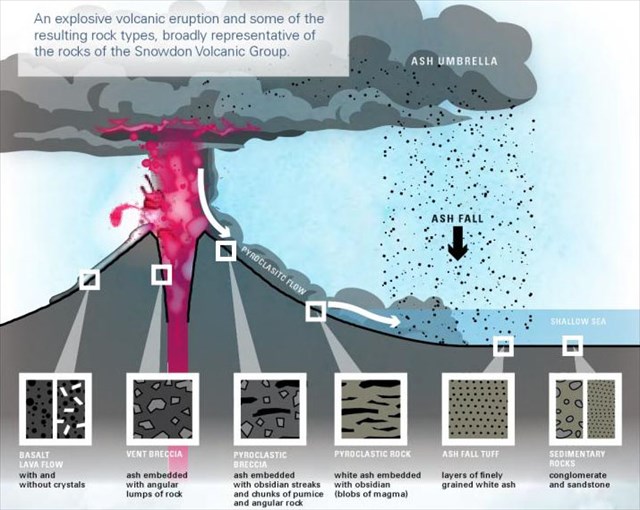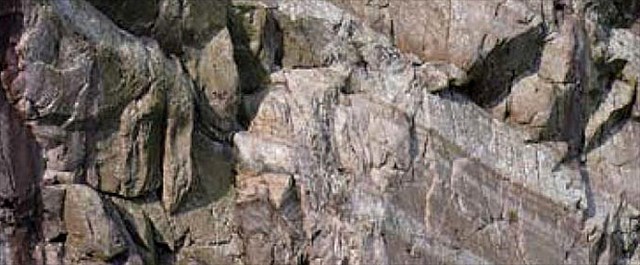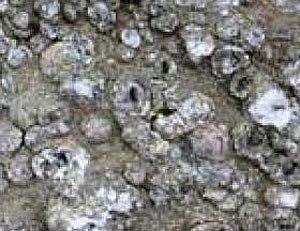Source information for this EarthCache has been taken from Mike Raine's book 'Nature of Snowdonia' - a field guide for the mountains of Snowdonia through the seasons, its plants, animals and rocks. Many thanks to Mike for also allowing the reproduction of his diagram and photographs in the listing.
Initial Warnings
Firstly, please note the terrain of this earthcache. Depending on how you climb it, the north face of Tryfan can be a climber’s paradise but it is also potentially very dangerous with sheer drops and in adverse weather or low visibility the danger will increase. This earthcache has been placed with the full support of the National Trust and the Snowdonia National Park, however, they have asked for the listing to remind visitors of the dangers of this area and the need for forward planning, so do be prepared for changing weather, bring appropriate clothes and maps as you don’t want to get caught out. There are sheer drops very near to ground zero and you will need to climb up or down part of the north ridge to reach it. Please read up on the north ridge before attempting to reach this one.
Secondly, please note the difficulty of this earthcache. This is partly linked to the difficulty of gathering your answers in such an inhospitable and bleak location, but the questions are meant to be a little challenging and I would expect anyone who logs this to stop and spend a little time examining the rocks and you must send in your answers – this is not a walk-past-and-log earthcache. Special equipment is required to fully complete the tasks – please bring a hand lens or loupe to allow you to enhance the rock textures. I appreciate everyone’s geological ability varies but please give it a good go! Please send answers through my profile and then log your find. You do not need to wait for a response but be aware if I don’t receive answers your log may be deleted.
Background to the geology of Tryfan
To begin, we will look at the background to the geology of the area. The geology of Snowdonia is extremely complex so we will only focus on a couple of aspects. The rocks are very old, formed between 495 and 443 million years ago. Have a look at the below diagram. The rocks in Snowdonia are mainly extrusive, rhyolitic volcanics, the majority of which are the result of explosive eruptions. These rocks are known as the Snowdon Volcanic Group. There is an occasional basalt lava flow in the mix, some sediments such as sandstone and the ubiquitous slate (metamorphosed mudstone).

So, imagine you have just taken your bottle of fizzy pop and shaken it for a long time – then taken the top off just a fraction. The effect is volcanic – the bubbles alter, pressure from the drink finds the weakness in the bottle seal and forces its way out. The volcano is similar, molten rock squeezes upwards through weaknesses in the earth’s crust and may eventually erupt out of the vent. Magma typically contains a lot of dissolved gases such as carbon dioxide and steam. As pressure of the magma is released, the gases come out of the solution to form bubbles. The expansion of these bubbles and the speed at which the magma is forced out of the vent causes the molten rock to be ripped into innumerable tiny fragments or pyroclasts.
The gases and pyroclasts are ejected from the vent and form a huge umbrella-shaped cloud laden with ash and fragments. It spreads and it all rains down. When this ash settles is forms ‘ash fall tuff’ which blankets the ground downwind of the volcano. Whether it falls on land or sea, it is deposited like sediment and forms thin layers. Minute grain size and multiple thin layers are characteristic of ash fall and so do watch out from them as you climb the mountain. It often weathers to a pale creamy-white colour. If the particles are still hot when they land, they may stick or weld together – then it is known as a ‘welded tuff’. Many of the rocks in Snowdonia are ash flow tuffs, and some are more welded than others.
Quartz

Quartz is made of a mineral called silica. It is a pretty hard, capable of blunting a knife or scratching glass. The photograph above shows some exposed veins and nodules of quartz on a Snowdonian mountain. Quartz veins such as these formed during the volcanic activity outlined above. The rocks fractured under intense folding or due to the intrusion of magma, and then the fluidal quartz would shoot along the cracks and crystallise forming long, narrow veins. Quartz-rich fluids also found their way through sediments and porous volcanic deposits like ash fall and ash flows. The quartz then started to crystallise around a fossil or volcanic fragment to form a quartz nodule.

The above image is of quartz nodules on Tryfan, crystallised out of solution around hard fragments. This shows a fresh patch of quartz and this is good because you can see the crystals and the textures in the rock. The size of the crystals can influence the colour of the rock, and the image above is not necessarily from GZ. In this exposed location, you may be more likely to find weathered nodules, or ones people have climbed on. The weathered surfaces offer better clues about the chemical composition.
Logging Requirements (Questions to Answer)
The most noticeable quartz is right here at the given co-ordinates. You are standing on a large, exposed vein of quartz. It’s always a good idea to take a photograph at an earthcache to prove you were there, so a photograph of you (or your GPSr) with the vein would be appreciated, although is not mandatory. I know this list of questions will look a bit odious, but they are not as bad as they look - I have included more questions to merit the difficulty rating rather than asking less and making them impossible to answer, so please do have go at them all.
1) Focus on the main vein. Look at the bits people have walked across or have been weathered by the wind and rain. How does it feel - describe the texture and colour. You can use your hand lens or loupe here, and on all the questions to look at the stones in more detail.
2) Still focussing on the main vein, can you find somewhere a little more hidden from peoples feet and the weather elements (hard up here I acknowledge). Can you see the difference in the colour and texture? How is it different?
3) Now, you need to look for nodules, and remember there is a sample photo to help you know what you are looking for. You are welcome to expand your search away from GZ. Ideally, you will again be able to locate again both a weathered or walked on example, and also a ‘fresher’ example where the crystals and textures are much clearer. Your answers will vary depending on what you find, but again, please describe the colours and textures that you find, and the difference between the fresh and weathered nodules. Remember, the size of the crystals may change the colour, so make use of your lens or loupe here.
4) Please also make any comments about the differences between the nodules and the veins in terms of quartz colours, textures and anything else you note. This can be incorporated into your previous answers.
5) Now, turn your attention to the rocks that are making up the general mountain. I have explained about the ash flow tuffs and the welded tuffs that have affected the rocks in this area. What do you think the rock is at GZ? Is it ash flow tuff or welded tuff, or maybe you can find examples of both? How does it feel compared to the quartz?
6) You might be able to spot visual patterns the in the formation of the tuffs. The ash forms white layers and you may get darker fragments that were once molten bits of rock. This can form quite spectacular zebra effects in the rock. Can you see anything like this, and once again, if you can’t see it at GZ I encourage you to look for it as you climb up or down as you pass the layers very quickly on the north ridge. Photographs are welcome of any zebra rock you spot, but not mandatory. If you find it, describe the difference in feel between the two colours, and the texture.
7) As you climb the north ridge you will pass several areas absolutely packed with fossils (I have provided a waypoint for one of most impressive areas), and some others can be found not that far from GZ. I have deliberately not talked about the fossils - can you explain to me how these fossils came to be part of this volcanic rock environment? Can you identify any fossils, ideally at the waypoint, and if so, this may help trace the origins.
8) To finish, a quick research question, assuming you don’t already know the answer. This region was formed during the Palaeozoic Era, which is typically sub-divided into 6 main periods. Please tell me the name of the period when this volcanic activity took place and the mountains of Snowdonia, including Tryfan, were created. This information is readily available online.
Again, please ensure all answers are sent through my profile and not posted in your log. I do monitor my earthcache emails and will delete logs if you do not send anything to me. Please enjoy your visit.
Please enjoy your visit to Tryfan's North Ridge.